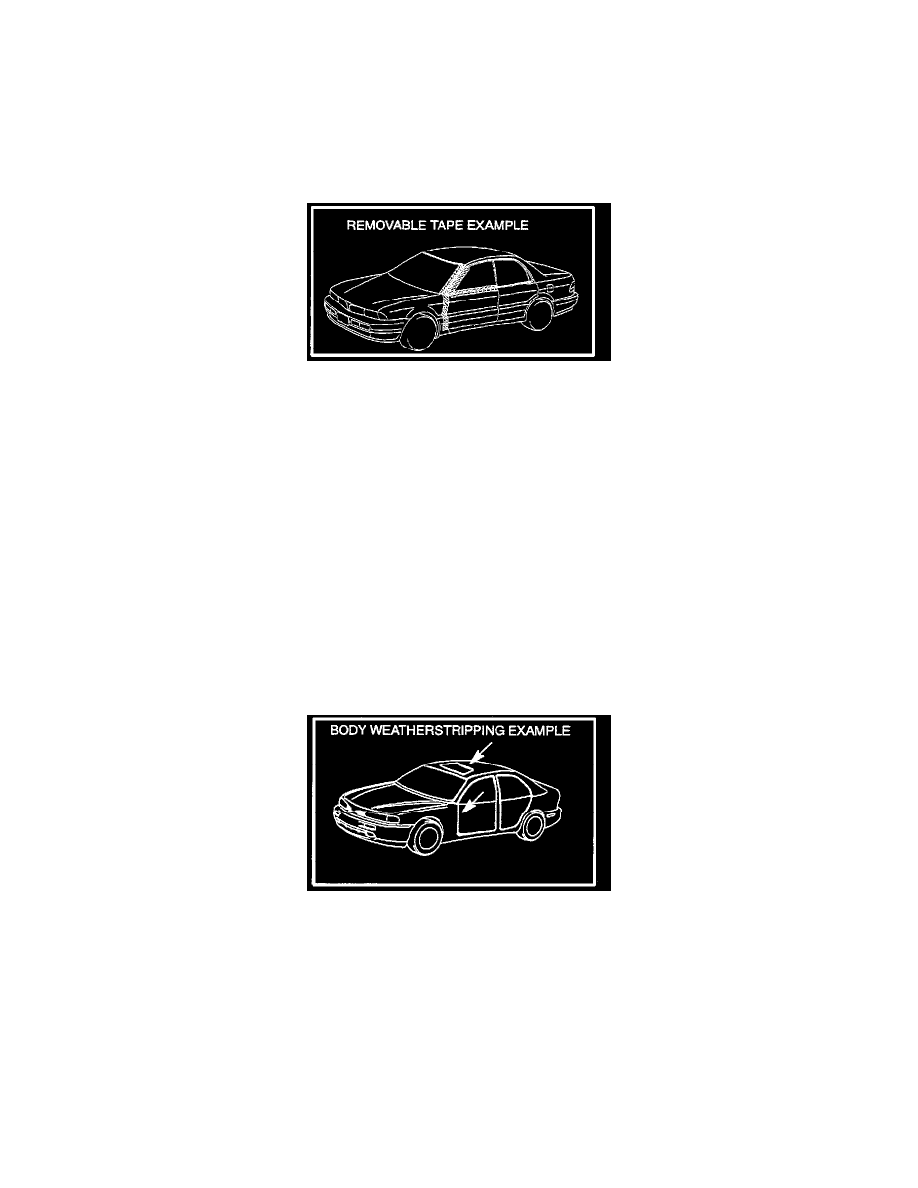Expo LRV AWD L4-2350cc 2.4L SOHC 16 Valve (1993)

racks are common accessories that may cause wind noise. If possible, test drive the vehicle again with the suspected accessory removed.
5.
Note any non-factory sunroofs, roof racks and lights in the suspected wind noise area. Service manuals do not describe repair or adjustment of
these items, and they are not covered by the Mitsubishi warranty. You may refer the customer to the aftermarket manufacturer.
6.
On models with a sunroof, ensure that the sunroof is properly adjusted and closes securely.
7.
On convertible models, ensure that the top is properly adjusted. The windshield header should not leak air into the interior. Side windows should
seal securely against the top weatherstripping.
8.
Apply removable tape over suspected interior and exterior areas. Then test drive the vehicle to determine whether the wind noise is eliminated.
If the noise is eliminated with the tape applied, remove the tape from one area at a time, test driving each time you remove the tape from a suspected
area. By process of elimination, you can pinpoint the noise source.
COMMON WIND NOISE AREAS
1.
Doors
a.
Examine the weatherstrip for damage, deterioration, and improper installation. Rub some chalk on the weatherstrip, then close the door.
When you open the door, a break in the chalk line on the door frame indicates an air leakage area. Repair or replace the weatherstrip.
b.
Examine the door itself for misalignment or deformation. Adjust or replace as required.
2.
Door Mirrors. If a door mirror is a suspected source of wind noise, disassemble the mirror. Examine it carefully for possible damage (e.g., cracks)
that might create air leakage. Repair or replace as required.
3.
Windows. Ensure that windows are properly aligned in their channels and the glass runs are sealed securely against the glass when the door is
closed.
4.
Body Weatherstripping
Body weatherstripping usually provides multiple barriers against leakage. A-Pillar weatherstripping has inner and outer seals in channels or
pressed against body flanges. Where the door meets the center pillar, balloon sections compress when the door is closed. Lip sections support
balloon sections and provide additional protection against leakage. Be sure the doors fit evenly with no gaps. Check for crushed balloon sections
and weatherstripping out of its channel. Adjust or replace as needed.
